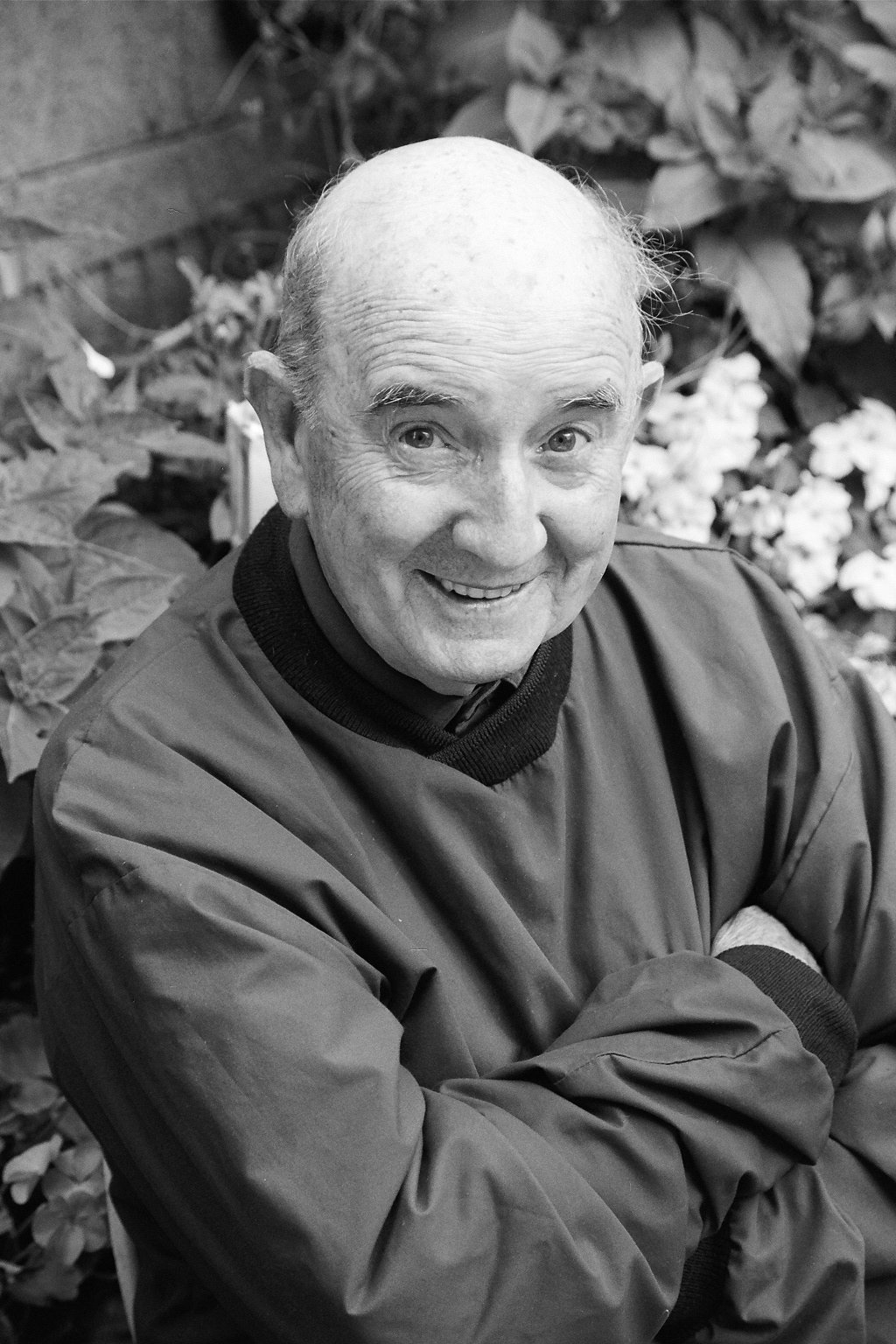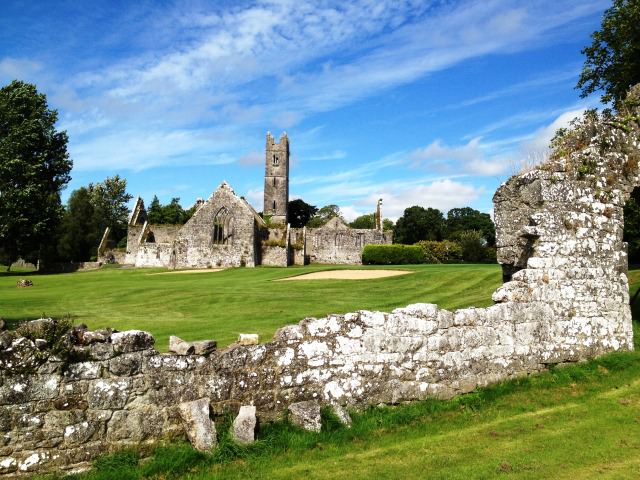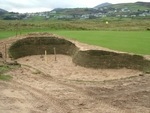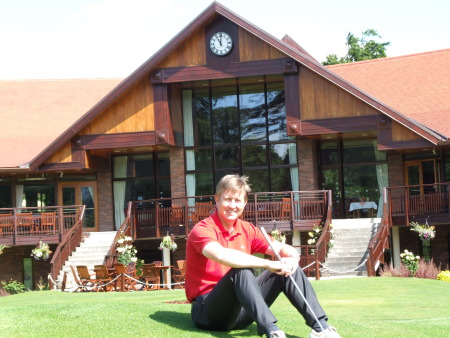Remembering Wattie Sullivan - 1928-2022

Walter Desmond “Wattie” Sullivan, 30 January 1928 — 16 April 2022.
The great Grange professional Wattie Sullivan passed away on Saturday, April 16, aged 94.
He remains one of the most popular Irish professionals of the past 60 years, renowned as a teacher and for his wonderful manner and his simple way of explaining the intricacies of the golf swing.
When Joe Carroll left Grange and emigrated to South Africa in 1964, Walter Desmond Sullivan, affectionately known as Wattie, took up the position for the next 29 years with his late wife Bridie by his side.
According to Brian Treston and Michael Forde in "Golf in the Foothills, A History of Grange Golf Club (1910-2010)", Wattie became a member of the Irish PGA at the tender age of fourteen and a half years as assistant to his father Jack in Bray.
His father passed away around that time, and after taking up a position at Athlone in 1952, he returned to Dublin in 1960 to work at Rathfarnham Golf Club in Butterfield after John McGuirk decided to return to Co. Louth as head greenkeeper.
"It was there that Wattie's reputation as a first-class teacher first gained currency," Forde and Treston write. "On the Rathfarnham course, there was an old barn on two levels which Wattie had kitted with matting, nets and lights to enable him to teach all year round.
“Soon he was giving 1000 lessons a year – remarkable in a small club like Rathfarnham. Amongst his pupils was his own doctor, Sean O'Flanagan, a prominent member of Grange, and he was so impressed with Wattie that he encouraged him to apply for the vacancy at Grange in June 1964.
"Sean even drove Wattie down to Grange for his interview with Freddie Dixon and Owen Carty. Serious negotiations followed with Wattie settling for a salary of £8 per week plus the right to sell golf balls – the first time such a concession had been granted by Grange despite requests from previous Professionals."
Wattie's reputation as a teacher grew, and he was appointed as a teaching professional to the ILGU, spotting the early talent of the great Mary McKenna and later receiving a letter from the LGU thanking him for alerting them to the potential of one of his junior pupils, who would go on to make nine consecutive Curtis Cup appearances.
"He was in such demand as a teacher that he was soon looking for an Assistant who could look after the shop and learn the trade. The first such assistant was Larry Swan, a nephew of Bridie's who later became a senior executive with IBM," the Grange history recounts. "When Larry left in 1966, Wattie asked Jimmy Bradshaw in Delgany if he knew any young lad who wished to train as a professional and thus it was that a gangly, 16-year-old, future Ryder Cup player pulled into Grange one morning on his Honda 50. His name was Eamon Darcy, who remained in the club for two years."
He coached Grange's finest players, including Paul McGinley and Brian Shaw, who spent most of their spare hours around his shop.
"We were golf shop rats," recalled Shaw, who is now the professional at Trump Doonbeg. "We weren't there to learn how to become pros or anything. We just wanted to hear all the stories about the great Christy O'Connor and that kind of thing."
He would also coach Pádraig Harrington at the behest of his father Paddy while at the same time holding his own on the Irish circuit.
He won his first tournament purse as a teenager in 1946, collecting £6.10.0 at the now-defunct Kilcroney Country Club near Bray, featuring in the top 10 in the Irish Order of Merit for many years despite the fact that competitive golf played second fiddle to his teaching.
Captain of the PGA in Ireland in 1979, he retired in 1993 but remained closely connected with Grange as a patron of the Dublin Boys Championship, which has now expanded to become the Dublin Boys and Girls.
I caught up with him at the end of 2017 for a brief phone chat for the Irish Independent's Tee to Green golf supplement and our regular "Quick 18" feature, which I reproduce here:
A Quick 18 with Wattie Sullivan
As he prepared to celebrate his 90th birthday on January 30 2018, former Grange professional Wattie Sullivan remains as sharp as a tack. One of Irish golf's best-loved teachers — "open the door and close the door" was the foundation stone of his simple swing philosophy — he fell in love with golf and brought pleasure to thousands, including many of Ireland's greatest players
1. When did you first pick up a club?
I was around 12 when I first played. There was a field at the back of our house, so I'd be hitting the ball from one corner of the field to the other. Then my father, Jack, would send me out to play with a Mr Byrne or whoever wanted to play. Bray was a nine-hole course, and you could end up playing 54 holes in a day, and you got half a crown for that. It was unbelievable.
2. What was your father's background?
He was originally from Brian Boru Avenue in Clontarf, and he served his time under Tom Hood in Royal Dublin along with Willie Nolan and Michael Moran. He then went off to do Golfing Union work around the Cork and Limerick area and was private professional to Lord Dunraven in Adare Manor from 1912 to 1914.
3. Did he fight in the war?
When the First World War broke out, Lord Dunraven offered him a commission in the British Army, but my father said, 'No, your lordship, I am a pacifist. I don't fight.' He went to England and came back home in 1919 to start in Bray, where he was attached for 25 years.
4. So you followed in his footsteps.
Well, I had two older brothers, and only one of them was interested in following my father into golf. But he couldn't stick it, so I went to help my dad instead. I was 14 when I left school to join him.
5. You've said in the past that it was the smell of shellac and meths that drew you to the pro's shop.
Oh, indeed. My whole life was golf. I ate it, slept it and drank it.
6. Your father sadly died when you were young. I'd imagine bringing money home was important.
I was 14 and a half when he died, aged 54, and so I served my time as apprentice to the man who took his job. Norman Wilson was his name.
7. Life was tough in Ireland during World War II. What did you do when you had served your apprenticeship?
I went to Carlow in 1945 for what was supposed to be a period of five months. After that period, they offered me a job on the course and rather than being idle, I took it. I was weeding greens by hand with three little boys. Then I painted the clubhouse and even pumped water onto the roof of the clubhouse from a well next to the clubhouse. Professionals did a lot of work like that in those days.
8 When did you realise you could make a living from the game?
I remember my first professional competition was at Kilcroney and I finished joint second with Harry Bradshaw, who was off plus four, and I was off three. He was around in 69 for 73, and I was around in 76 for 73. I got £2 10s for that and another £4 for tying for second in the fourball after dinner. So I got £6 10s the first time out. I went home to my mother, and she opened the two envelopes and said, 'That was two weeks' wages for your father!' So I never did anything else.
9. When did you eventually get a full-time job?
I got a job in Athlone in the early 50s, where I was the club professional, and the greenkeeper and my wife was the manageress. We lived in the clubhouse, and we were there for eight years until 1960. I then got a job in Rathfarnham and spent four years there before Joe Carroll left for South Africa, and I got the job at Grange. I was there for 29 very happy years and never had one argument.
10. They say you gave 1,000 lessons a year.
Grange was, and is, a family club, full of very kind people who were very good employers for me. And I was always very busy. I could be teaching all day or playing around the country. So I was lucky my wife Bridie gave me great help in the shop. I had a very happy time at Grange.
11. You played in a wonderful era alongside the likes of Bradshaw and Christy O'Connor. Were you tempted by tournament golf abroad?
I played four times in England with O'Connor and failed to qualify by two shots every time. So one day, I looked at myself in the glass and said, "What are you doing over here when you can't win at home?" I never went again.
12. Competition at home must have been just as tough?
I played all over the country but only won once up in Tandragee and got around £500. But you had Christy O'Connor, Harry Bradshaw and Fred Daly to contend with. So you hadn't much chance against those fellas.
13. Who was Ireland's greatest Irish golfer?
As a professional, Christy O'Connor though you also had Bradshaw and Norman Drew were two fine players. Of course, now you have Rory McIlroy, who is just bloody brilliant. And he'll be back up there soon too. As an amateur, you'd have to say, Joe Carr. And Jimmy Bruen, who was brilliant from an early age.
14. You had an eye for talent and even gave a young Pádraig Harrington the occasional lesson. What did you see in Paul McGinley?
When he turned pro, someone asked me if he would win, I said he'd win smallish ones and wouldn't win a major. But I put a "but" to it. I said, "But, says I, he's the best commercial property you could have." And I have been watching him ever since, and he is just brilliant. He didn't win a major but has an outstanding golfing brain.
15. Name your dream fourball?
I am too old to play now — I'll be 90 on January 30 — but if I had to pick a fourball, it would be Joe Carr, Christy O'Connor and then either Harrington or McGinley. That would be hard to beat.
16. Driver or putter?
The best club in my bag was the driver. I never left the fairway. Hey diddle diddle, straight down the middle. That's what they called me.
17. What made you such a straight hitter?
Well in Bray, there was OB down the right of the first, so you never hit a fright, right. And then there was a pond on the left for your second shot, so you never hit it left either. You had to be straight all the time.
18. What's your golfing philosophy?
Golf's a wonderful sport, and anybody who takes it up falls in love with it. My advice? Be honest, be happy and enjoy every moment.
Wattie Sullivan, 30 January 1928 — 16 April 2022.
Ar dheis Dé go raibh a h'anam dílis.






